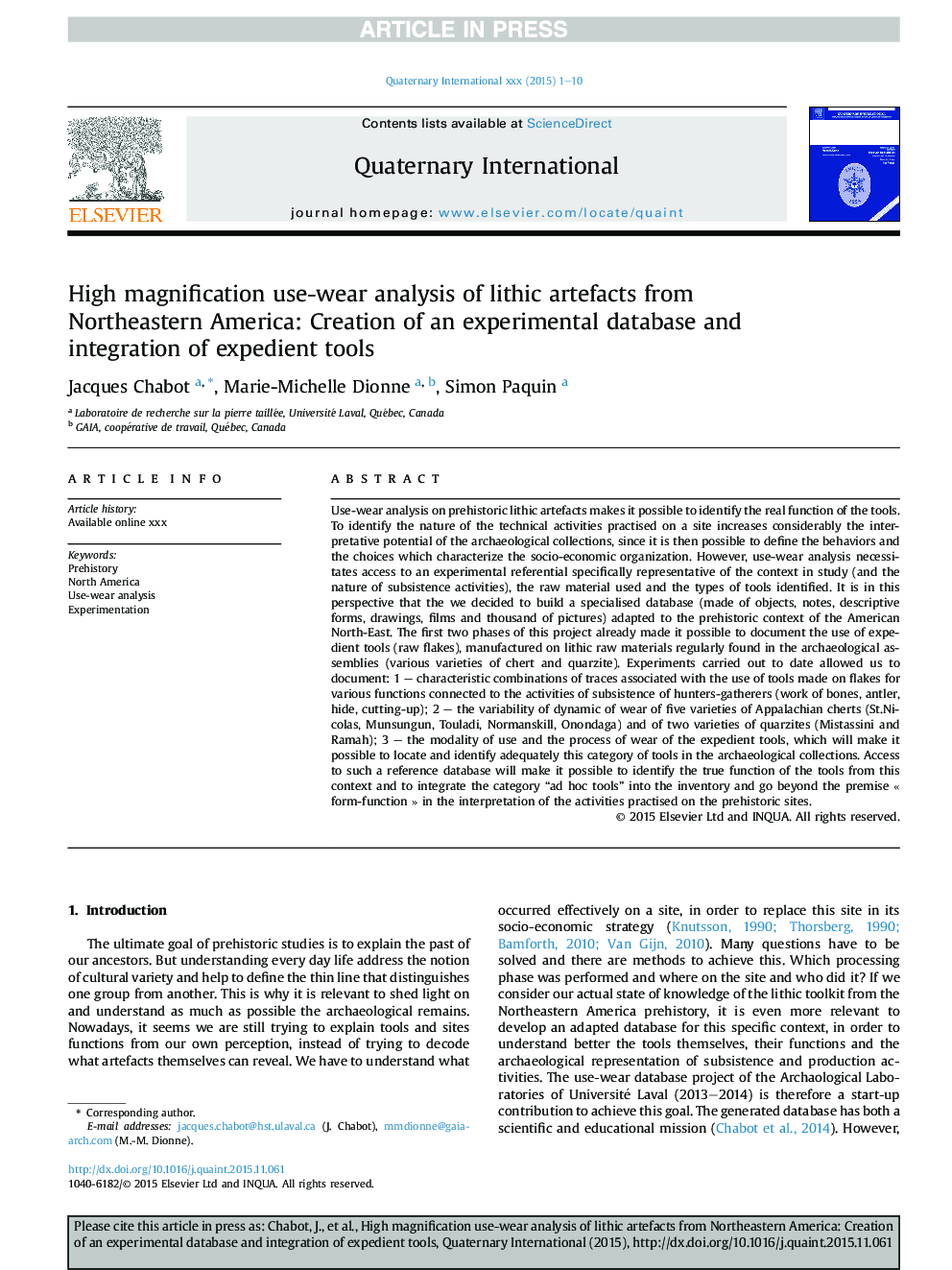| Article ID | Journal | Published Year | Pages | File Type |
|---|---|---|---|---|
| 5113922 | Quaternary International | 2017 | 10 Pages |
Abstract
Use-wear analysis on prehistoric lithic artefacts makes it possible to identify the real function of the tools. To identify the nature of the technical activities practised on a site increases considerably the interpretative potential of the archaeological collections, since it is then possible to define the behaviors and the choices which characterize the socio-economic organization. However, use-wear analysis necessitates access to an experimental referential specifically representative of the context in study (and the nature of subsistence activities), the raw material used and the types of tools identified. It is in this perspective that the we decided to build a specialised database (made of objects, notes, descriptive forms, drawings, films and thousand of pictures) adapted to the prehistoric context of the American North-East. The first two phases of this project already made it possible to document the use of expedient tools (raw flakes), manufactured on lithic raw materials regularly found in the archaeological assemblies (various varieties of chert and quarzite). Experiments carried out to date allowed us to document: 1 - characteristic combinations of traces associated with the use of tools made on flakes for various functions connected to the activities of subsistence of hunters-gatherers (work of bones, antler, hide, cutting-up); 2 - the variability of dynamic of wear of five varieties of Appalachian cherts (St.Nicolas, Munsungun, Touladi, Normanskill, Onondaga) and of two varieties of quarzites (Mistassini and Ramah); 3 - the modality of use and the process of wear of the expedient tools, which will make it possible to locate and identify adequately this category of tools in the archaeological collections. Access to such a reference database will make it possible to identify the true function of the tools from this context and to integrate the category “ad hoc tools” into the inventory and go beyond the premise « form-function » in the interpretation of the activities practised on the prehistoric sites.
Related Topics
Physical Sciences and Engineering
Earth and Planetary Sciences
Geology
Authors
Jacques Chabot, Marie-Michelle Dionne, Simon Paquin,
